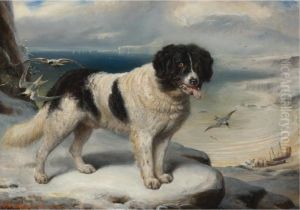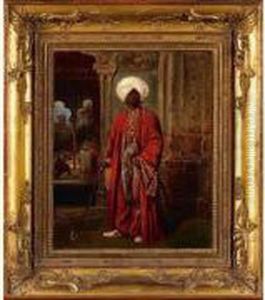Francois Gabriel G. Lepaulle Paintings
François Gabriel Guillaume Lepaulle was a 19th-century French painter, known for his historical scenes, portraits, and genre paintings. Born on January 21, 1804, in Paris, Lepaulle received his artistic training under the guidance of influential French artists such as Antoine-Jean Gros and Léon Cogniet. His education was rooted in the neoclassical tradition, which was prominent during his early years, but he also embraced the shifts towards Romanticism.
Lepaulle's career was marked by his participation in the Paris Salon, the official art exhibition of the Académie des Beaux-Arts in Paris. He exhibited his works there from the 1830s onwards, gaining recognition and accolades for his finely detailed and often emotive compositions. His historical paintings were particularly praised for their accurate depiction of events and attention to period detail, contributing to the 19th-century French public's fascination with their national history.
Despite the popularity of his historical scenes, Lepaulle was also a skilled portraitist. He painted portraits of many notable figures of his time, which are now valuable for their historical significance as much as their artistic merit. His genre works often depicted everyday life with a romanticized view, capturing the spirit of his era.
Throughout his career, Lepaulle received various honors, including medals at the Salon, and was eventually awarded the Legion of Honour, France's highest order of merit for military and civil merits, established in 1802 by Napoleon Bonaparte.
François Gabriel Guillaume Lepaulle passed away on November 18, 1886, in Paris. His works continue to be appreciated for their contribution to the French art of the 19th century, encapsulating the period's aesthetic shifts and cultural interests. Although not as widely known today as some of his contemporaries, his paintings can still be found in museum collections and are studied for their technical proficiency and historical content.
















